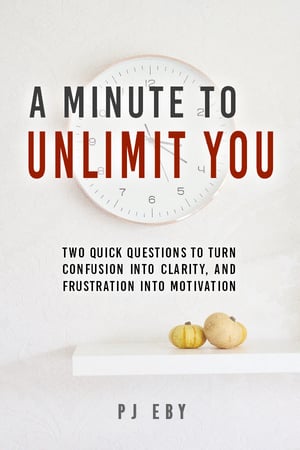The other day I ran across Eric Schaeffer’s blog, “ICantBelieveImStillSingle.com”, by way of a reference in Psychology Today. After reading a few of the articles, however, I quickly found at least one possible reason for the author’s continued singleness!
In one story, Schaeffer recounts how he visits a “rub and tug” massage establishment, and has a brief but satisfying encounter with his “masseuse”. But afterward, they end up talking, and it turns out that both he and she are Hollywood types with shows “in development”. Later, she calls him, suggesting they have dinner… and he turns her down, on the grounds that:
He doesn’t like what she does for a living!
Now, I’m not going to go into the mindboggling hypocrisy implied by such a statement. The woman in question pointed this out herself, and in any case it’s got nothing to do with what I want to write about here. No, what I want to point out is something in his response to her, when she pointed out his double standard:
“I just don’t think I’m the kind of guy who could deal with having a girlfriend who did the job and I want a girlfriend so if I go on a date and I like you and have fun I’m gonna want to see you again and have it progress so I feel like why start if I know I can’t ultimately live with it if we become boyfriend-girlfriend.”
Look closely at the mental process he’s following here. He’s basically imagining an entire future with this woman, deciding he doesn’t like it, and then deciding not to have dinner with her because of it.
In short, he just made a (possibly quite important) decision based on a complete hallucination!
And I understand this, because I used to do the same thing. No, not getting “full service” massages – I mean turning down invitations from people. All because of similar stupid hallucinations about how those invitations might turn out.
Now, you might not be turning down any “invitations” in your life, except maybe in a metaphorical sense. You might just be turning down the invitation to take control of your life… to accomplish your goals, and to
Live Your Dreams!
But to you, it doesn’t really feel that way, any more than this “I can’t believe I’m still single” guy thinks it’s his fault he’s still single! But I can almost guarantee you, that if you are feeling stuck and conflicted in almost any area of your life, there is a specific thought process involved – and at root, it’s almost exactly like the one Schaeffer went through to decide he “had to turn … down” the “second girl to ask him out in ten years”.
So let’s look at how his thought process went. First, he imagines things going well, and then later turning bad. Then he experiences an internal conflict, and finally… he gives up.
Now, think about that. None of that stuff had actually happened yet, so it’s all imaginary. And if you’re going to all the trouble of imagining how things will turn out, why not just keep imagining and imagine that her scriptwriting career will have taken off by the time they’re boyfriend-girlfriend, so that she won’t need to “rub and tug” any more guys like him for money?
Or perhaps he could have imagined that maybe he’d end up liking her so much that he’d be able to rationalize away his issues with her work? Or that she’d end up liking him so much, she’d find a different line of work to make him happy?
I mean, as long as you’re already imagining these things in the first place, why the heck not? Why not imagine more good things, instead of bad ones?
But when you’re getting stuck in some area of your life, you will usually imagine things turning out badly like this all the time. And you never even notice that you’re doing it! It’s like you’re watching this little movie screen in your head all day long, and you act like it was real. You turn down opportunities, and give up on your dreams,
All because of a stupid movie in your head!
You know, when I was in elementary school, kids used to trick me by “inviting” me to do things with them, that were usually setups for some sort of trick, ambush, or other bit of cruelty. So before too long, I started to imagine that every invitation was some sort of trap, and began saying “no” by default and avoiding people altogether.
Later, when my family moved half-way around the world, I ended up in a different school. But I continued in my default “no” response to invitations, even though nobody in this new place had ever tricked me, or even tried to do so, as far as I knew.
Fortunately, it eventually occurred to me that the risk of becoming permanently isolated and lonely was far worse than the risk of being set up or ambushed. So I made a conscious decision to start accepting social invitations by default instead.
And to the best of my recollection, nothing bad ever happened to me as a result of accepting any of those invitations. (I still got beat up at school, mind you, but it wasn’t because of any invitations I accepted!)
Now, a few years ago, my wife and I realized that we were going out less and less, doing fewer and fewer interesting things. We eventually figured out that what we were doing was thinking (or saying) things like, “Well, maybe we should go to see movie X.” “Yeah, but it’s Friday night and the first run, so it’ll be too crowded/already sold out.” Or, “yeah, but it’s only playing at (theater that’s 30 miles away).”
Do you see the pattern? It’s the same as before: first you imagine something positive, then you imagine the negatives involved in getting it. Then you decide it’s not worth it…
And you stay stuck!
But the more important pattern here is what we were not thinking about.
We were not comparing the negatives of going out, with the negatives of staying home.
Instead, we were only comparing the negatives of going out, with the positives of staying home.
Just like I was previously comparing the negatives of being ambushed, with the positives of staying safe.
Just like Eric Schaeffer was comparing the negatives of being uncomfortable with his potential girlfriend’s job, with the positives of not having to feel like a jerk when asking her to give up her job or later breaking up with her because of it.
In short…
You Get Stuck When You Mix Mental Polarities!
You see, you can’t make a good decision – or sometimes any decision at all! – by cross-comparing negatives and positives in your mind. Take a look at this little chart:
| Pluses | Minuses | |
|---|---|---|
Acting | #1 | #2 |
NOT Acting | #3 | #4 |
What are all the different comparisons you can make here? Well, you could vertically compare #1 and #3 to reach an easy decision, simply by choosing which path produces the best results. And the same thing goes for vertically comparing #2 and #4: just choose the path that doesn’t produce the worst results!
You can even do horizontal comparisons, which are a true cost/benefit analysis. You can compare the positives of doing nothing to the negatives of doing nothing, and see whether the pluses outweigh the minuses. And you can also do the same kind of analysis about doing something.
But if you’re comparing things diagonally, you will get stuck. Most of the examples we’ve seen here are along the diagonal from square 2 to square 3, but you can also get stuck on the 1-to-4 diagonal.
The True Meaning of “Mixed Feelings”
Each diagonal creates a different sort of “stuck” feeling, however. On the 2-3 diagonal, you feel helpless, like the world is out to disappoint you by dangling hope in your face and then cruelly snatching it away. On the 1-4 diagonal, you feel weak and ineffective, because even though you know exactly what you think you should do, you somehow find yourself unable to do it.
For example, a while back I coached a young man who wanted to quit smoking. He knew he should quit, and he wanted to quit. He was quite familiar with the positives of quitting (square #1), and the negatives of continuing (square #4). But he hadn’t given as much thought to the positives of smoking (e.g., getting to take breaks and socialize, having something to do with his hands), or the negatives of quitting (e.g. nicotine withdrawal).
So I didn’t spend our coaching time trying to “motivate” him to quit. Instead, I drew his attention away from the diagonal comparisons, and onto the horizontal/vertical ones.
And once I did that, he immediately began to see how he could mitigate the downsides of quitting. And for the first time, he was able to actually…
Commit to a Course of Action!
You see, the problem with making diagonal comparisons isn’t that we’re using our imaginations to predict how things will turn out. The real problem is that the diagonal pattern makes us stop thinking too soon!
See, Schaeffer thought “I’ll have problems with this girl”, and stopped thinking right there. When people would ask me to do things with them, I used to think, “This person is setting me up for something”… and stopped thinking right there.
And people regularly think, “I should diet/exercise/quit smoking/whatever… but I don’t have the time/don’t know how/whatever…” and then stop thinking right there.
But as long as you’re imagining, why not imagine how you’ll find the time? How you’ll learn to do what you need to?
Remember rule 2 of the Code of Owners: If it feels bad, you’re doing it wrong. So think about it differently. And as rule 4 says, choose what you want most, instead of complaining that you have to choose!
Notice, however that the Code does not say that you should choose what you dislike least. Nor does it say that you should weigh the costs and benefits of your choices! That’s because ultmately…
Happiness is not a cost-benefit analysis!
See, your dreams are not a question of what you dislike least. If you want a fulfilling life, you must learn to base your decisions on the “positives” column – what you want most.
That doesn’t mean you become a polyanna or engage in blind optimism. If you don’t pay any attention to the “negatives” column, you’re definitely going to get hurt. But the only reason to even know what the negatives are, is so you can mitigate them. Not decide your life based on them.
So the young man I coached found other ways to ensure that he takes breaks, socializes, and has things to do with his hands. And he also decided he was okay with going through a few withdrawal symptoms, to get what he wanted.
So, while you mustn’t let the negatives influence your decisions about what you want, you can allow them to influence your decisions about how to get it.
See the difference? Nowadays, when my wife and I think about what movie we’d like to see or other activity we’d like to go do, we’re much more likely to first choose what we want, and only then
Find a way to make it work!
Do you get this now? It’s so damn simple that it’s hard to remember just how important it really is! I still do it the wrong way sometimes – far too often, in fact. But here it is again, with lots of emphasis so you can’t miss it:
- Step 1: Choose what you want most.
- Step 2: Find a way to get it!
Most importantly, do not allow any thoughts of “how” to distract you in step 1. When you’re deciding what you want, “how” is completely and utterly irrelevant.
Recently, I had an Mindhackers’ Guild member who asked me if he could downgrade from Full membership to Associate membership due to a current financial difficulty. He said he really wanted to continue the coaching, but felt he couldn’t do so because of the state of his finances.
To be honest, I wanted to tell him that he should’ve waited a few days, at least until after this weekend’s coaching session (which as an Associate member, he won’t be able to attend).
See, the next session will be all about how to change from thinking about what you don’t want, or why you can’t have what you do want, to figuring out how to get it, instead.
And then, I would have reminded him to act like an Owner, instead of behaving like a “reasonable person”. You see, “reasonable people” adapt to the circumstances they find themselves in.
Owners, on the other hand, simply…
Change Their Circumstances Instead!
That’s why so many of my other clients went out and got raises, new jobs, new businesses of their own, or breathed new life into businesses they already had. They changed their financial circumstances, instead of allowing the circumstances to change them.
The truth is, most of what we think of as “hard reality” is either temporary, imaginary, or both! Thus, to make our decisions based on the so-called “reality of the situation”, is to live a life of delusion and impermanence, in which our dreams always come last, if they come at all.
But the things that are deepest and truest in our selves – and in our dreams and desires! – are more real than reality, and more permanent than our circumstances will ever be.
Because where there is life, there’s hope… and the possibility of change.
But if all you do is imagine things turning out badly – and then stop thinking altogether! – well… you might as well be dead already.
So live your life as its owner, not its slave.
Yours in the Guild,
–PJ




I have been reading your website and am very interested in what you have to say. Do you have any plans on republishing your book “You, Version 2.0”? I am very interested in buying a copy. If you don’t, do you know any means that I can get all the essays you have in the book?
P.S. – I apologize for posting these questions on your comments section. My search for an e-mail address turned up fruitless.
No, I won’t be republishing it. All but one of the essays are linked from this page, though.
I do have *one* damaged copy of the book left; the cover is a bit crimped and there is some ink smudging on two pages (that doesn’t affect the legibility). If you’re interested, email sales “at” dirtsimple.org and I’ll send you a link to purchase it.